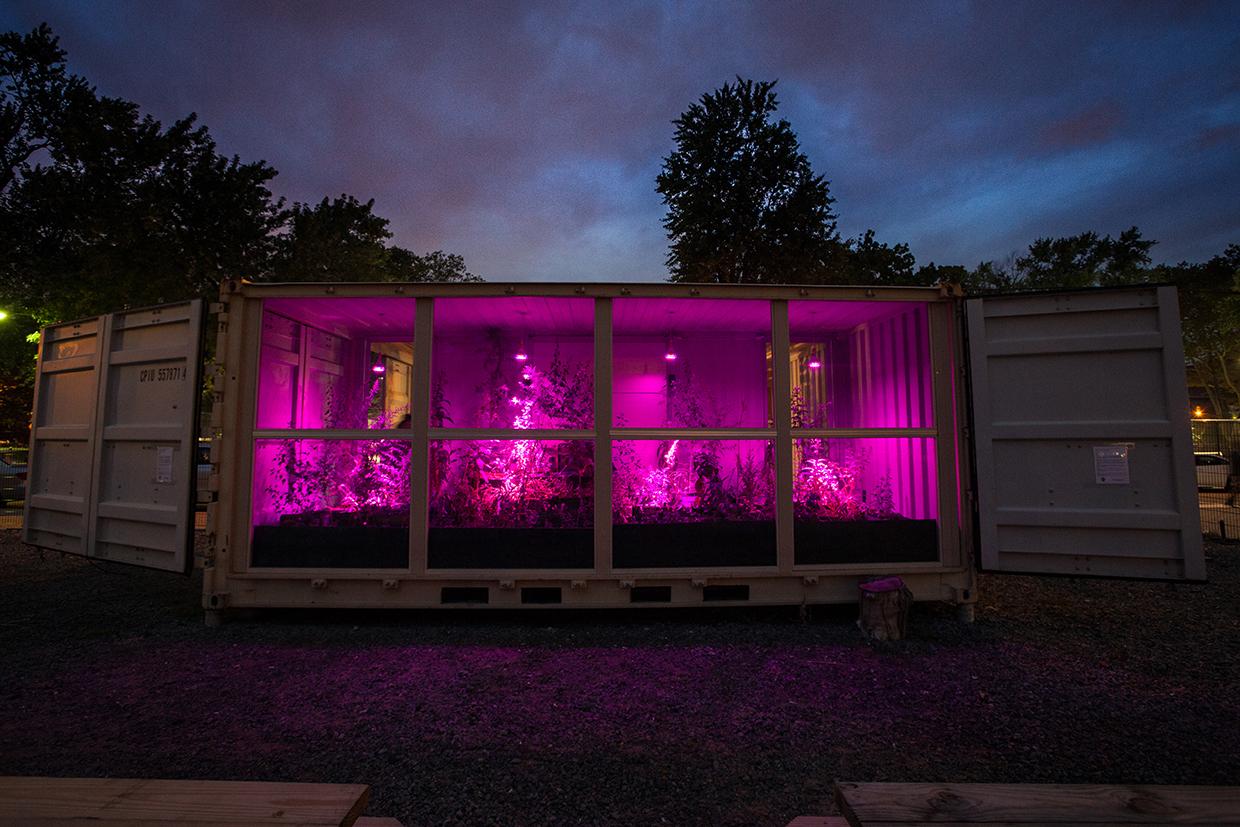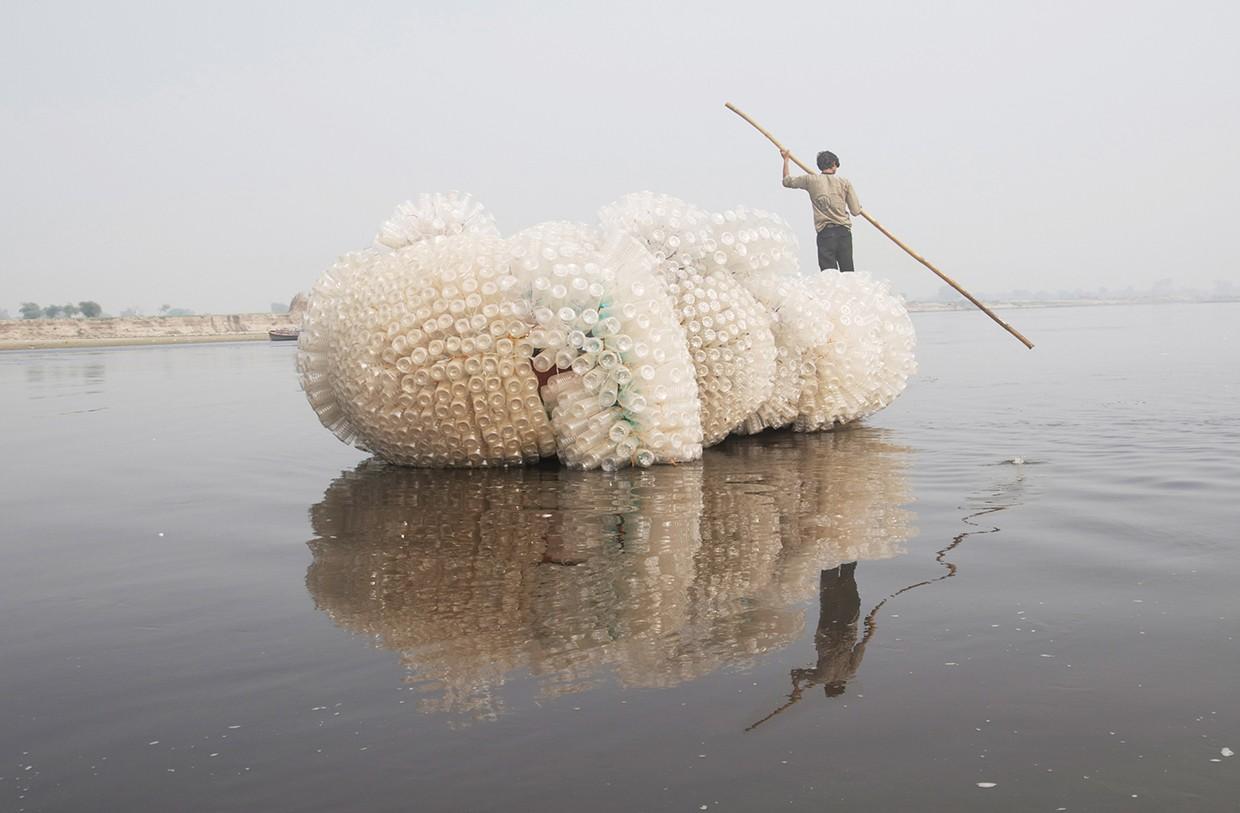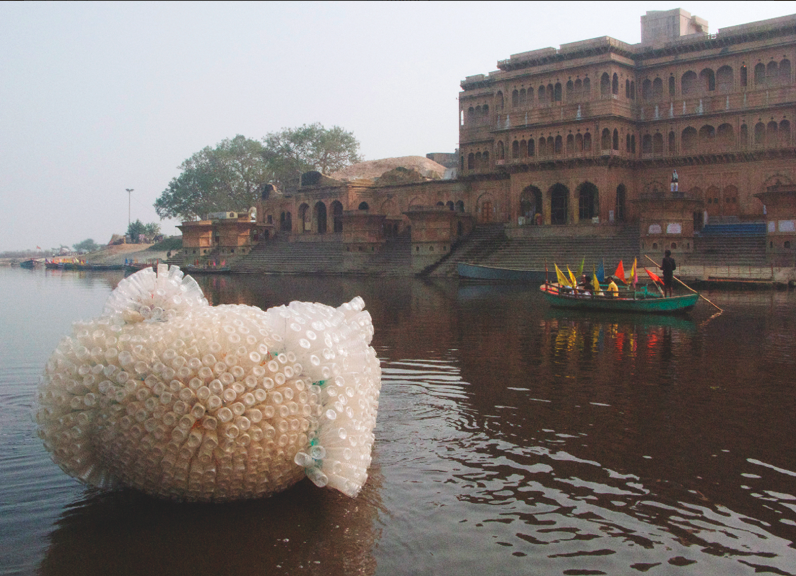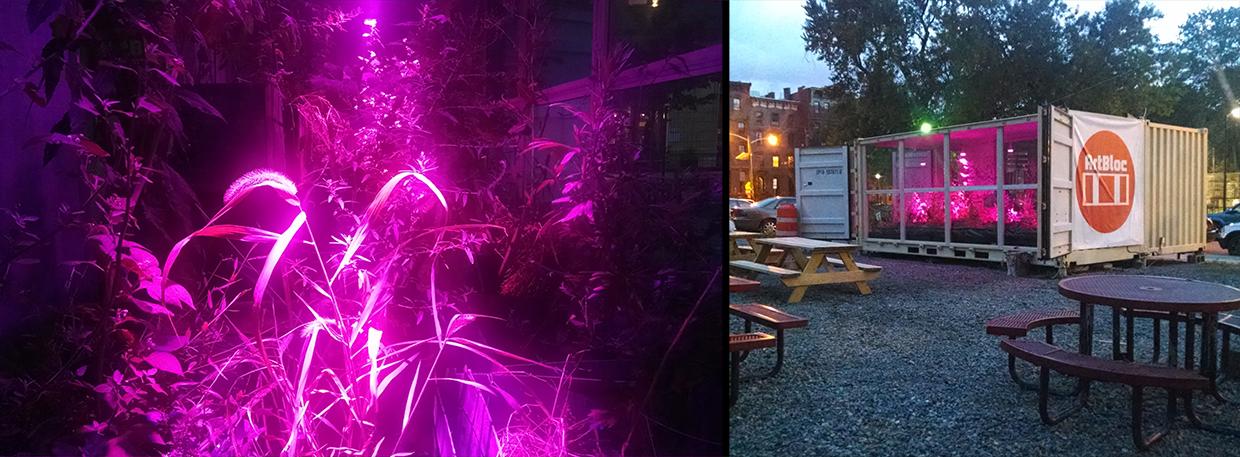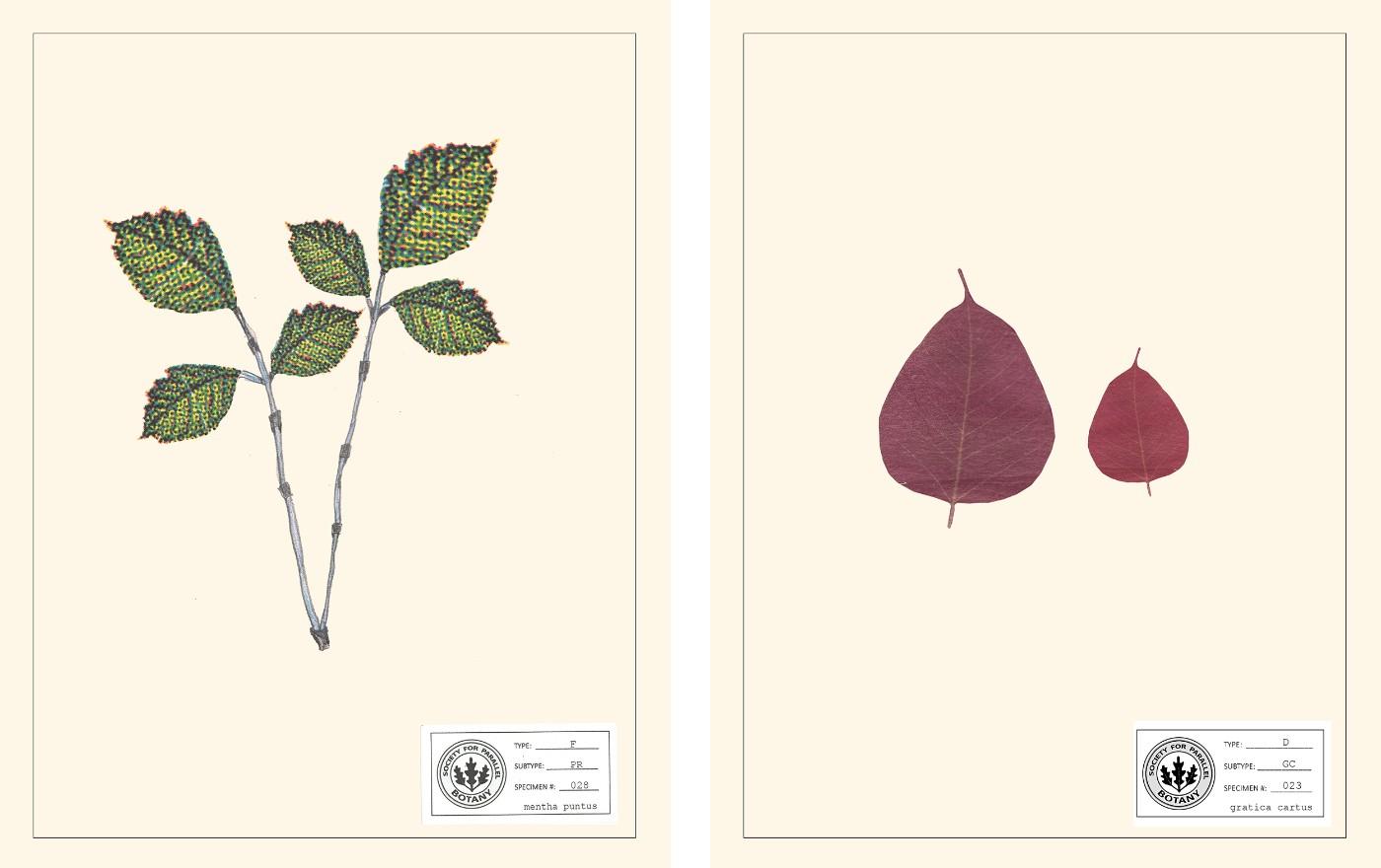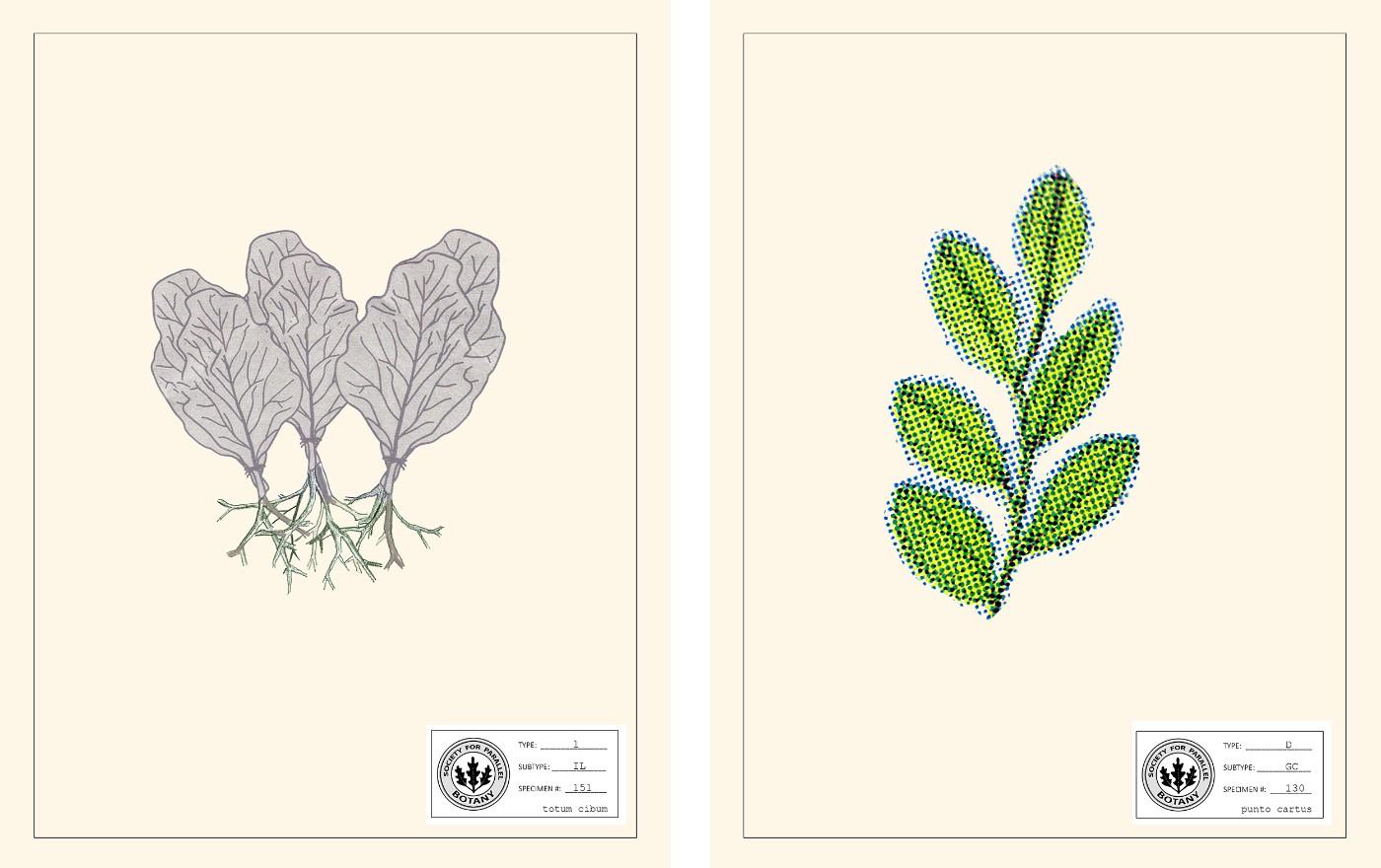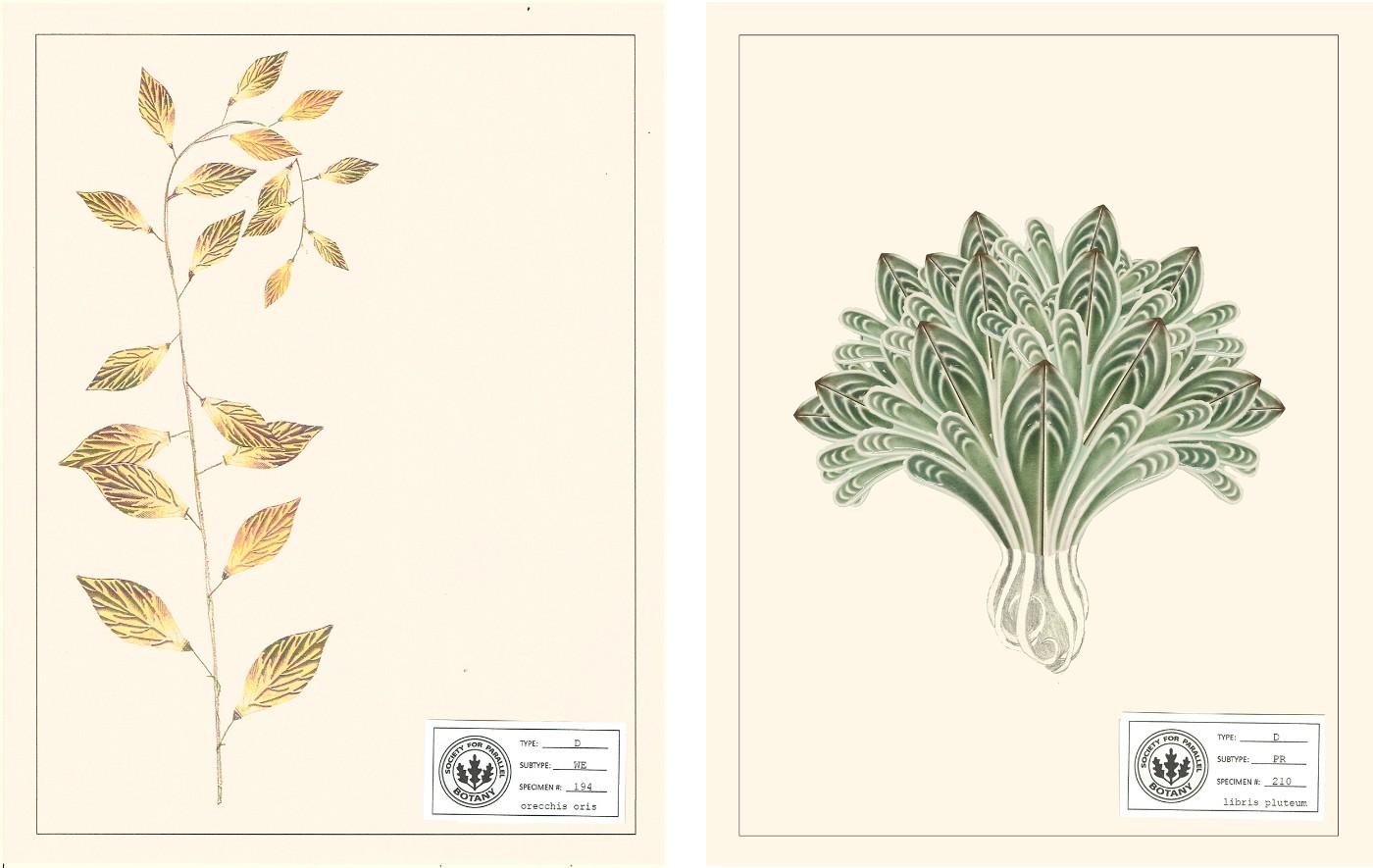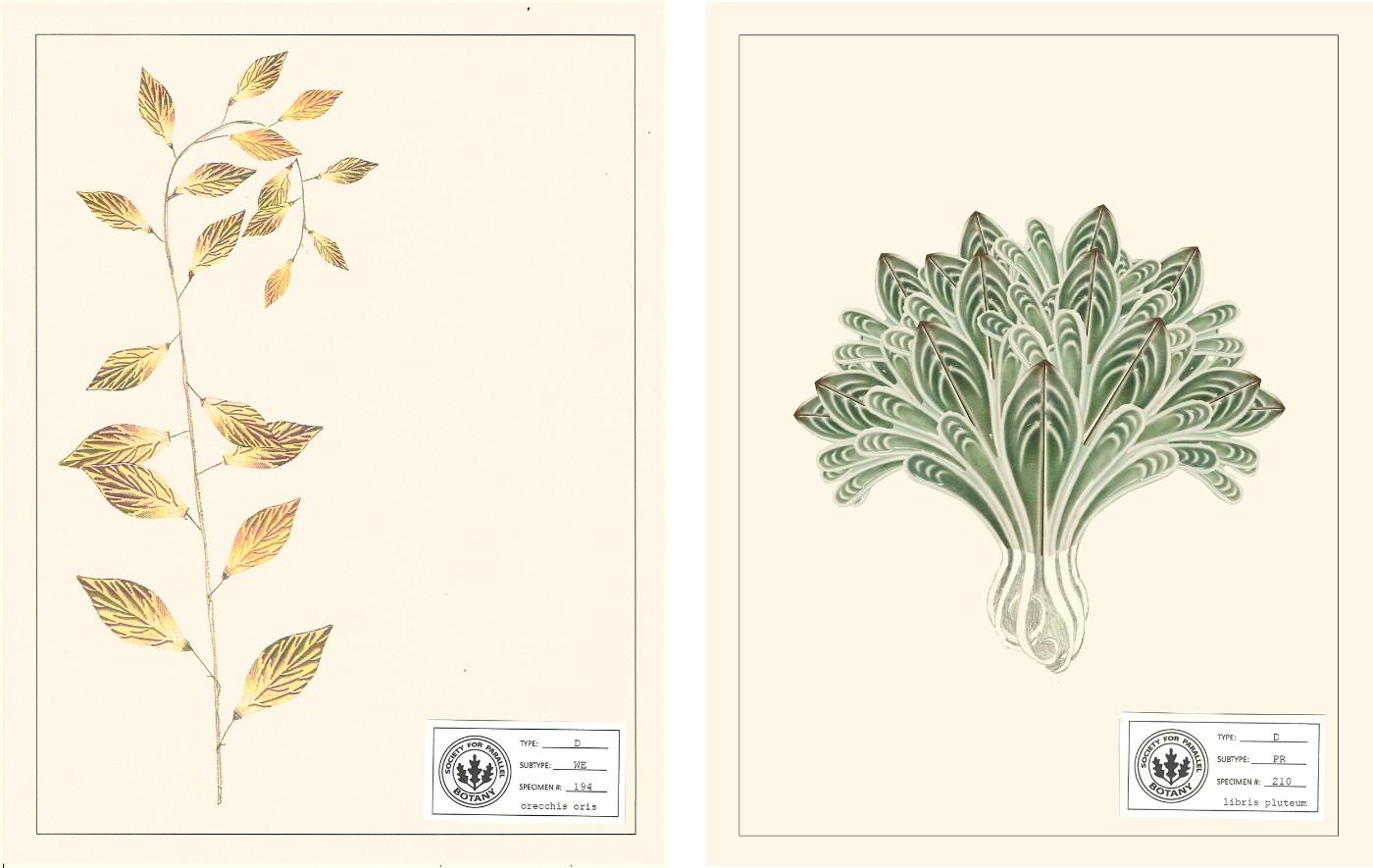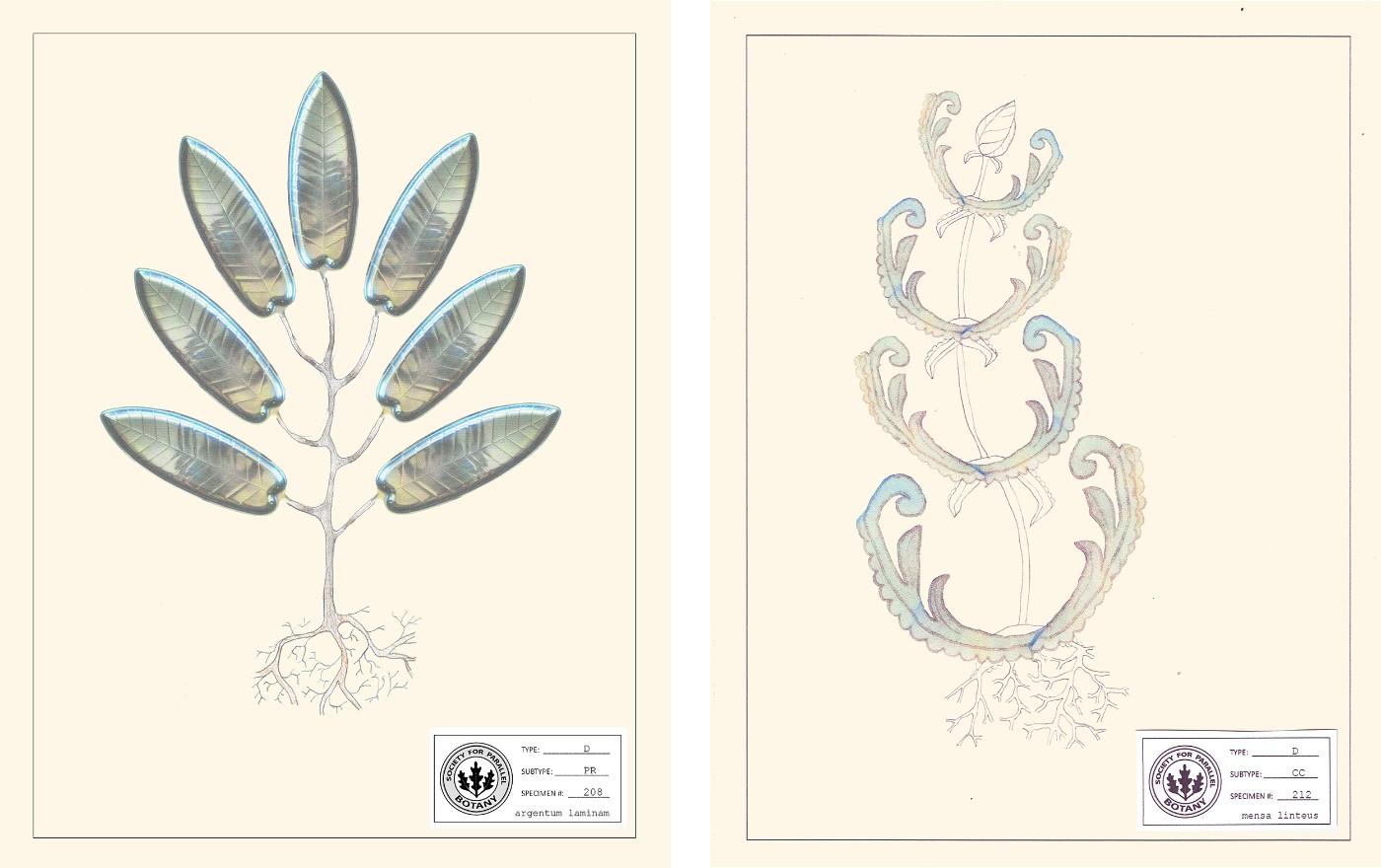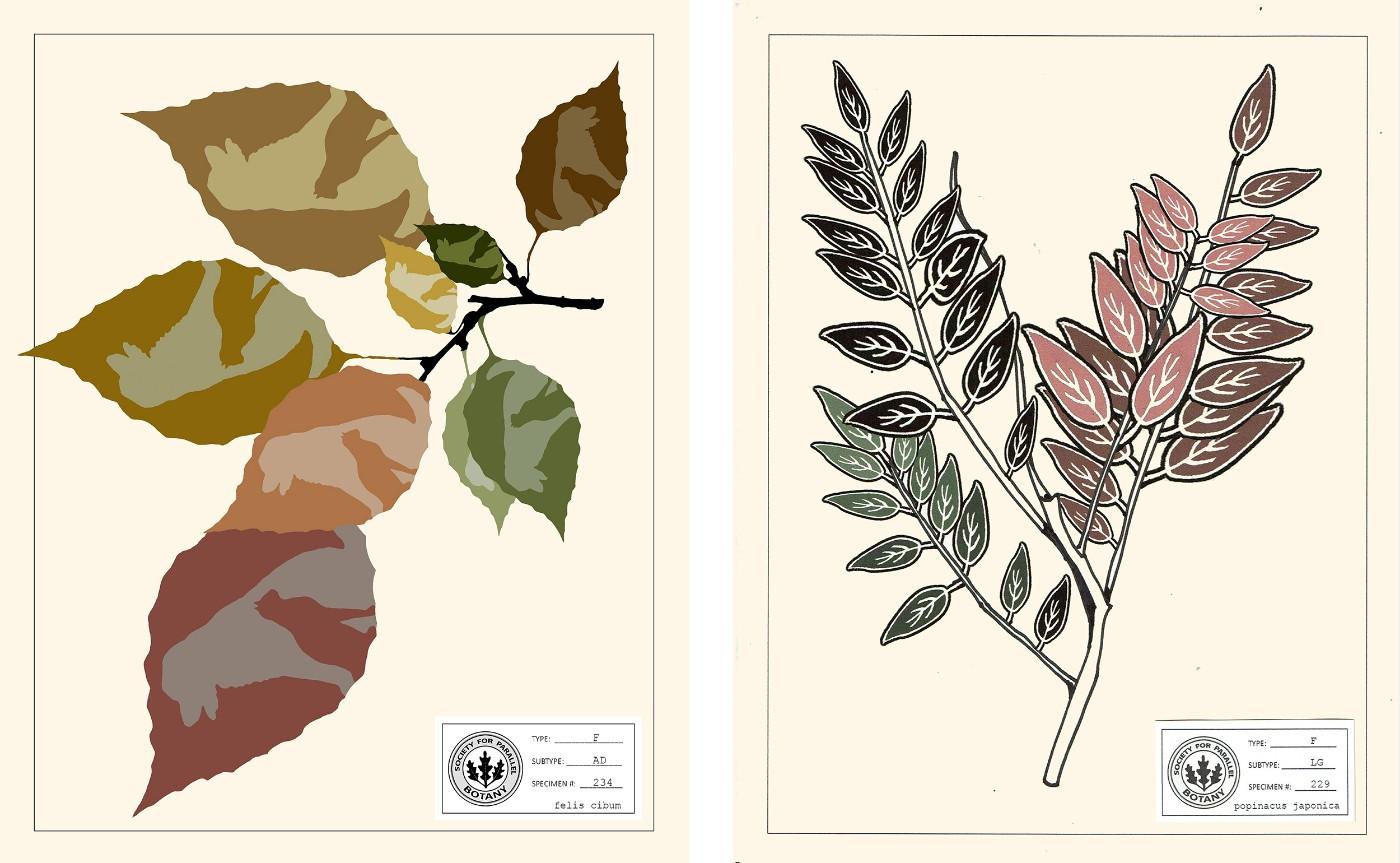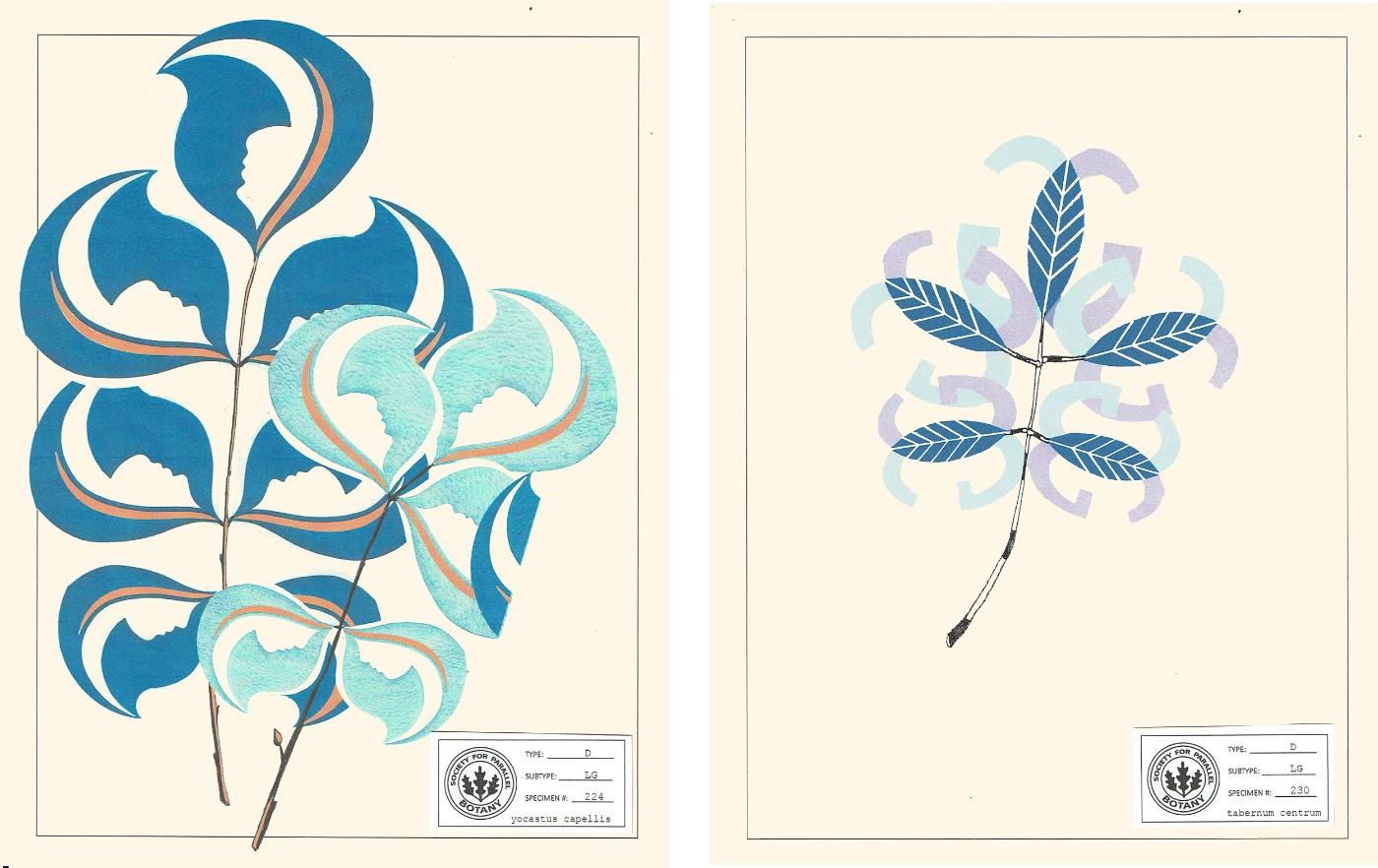One of her earlier works in this vein, Indra’s Cloud, grew out of an Asian Cultural Council residency in Vrindavan, India. According to Hindu Vedic texts, it was in this small town on the Yamuna River that the god Krishna encouraged residents to question the primacy of Indra, god of storms and river flows. In response to this insult, Indra unleashed what seemed an inexhaustible storm that threatened to wash the town right off the map, so to speak. But ever compassionate, Krishna lifted the town above the deluge until Indra’s storm rained its last drop.
Located about a hundred miles downstream of Delhi, today Vrindavan is both a site of pilgrimage and intense pollution from urban and agricultural runoff. Informed by both of these realities as well as the mythohistorical context, Percoco reimagined this foundational story as a contemporary allegory in Indra’s Cloud, a floating sculpture composed of over 1,000 discarded water bottles sewn together with scrap plastic rope and shaped around a small wooden boat. Launched on the Yamuna River, Indra’s Cloud became a potent symbol and physical manifestation of the extreme dangers of human-induced ecological degradation as well as a reminder of this knowledge that has been woven into religion, lore, and myth for eons and only recently forgotten.




